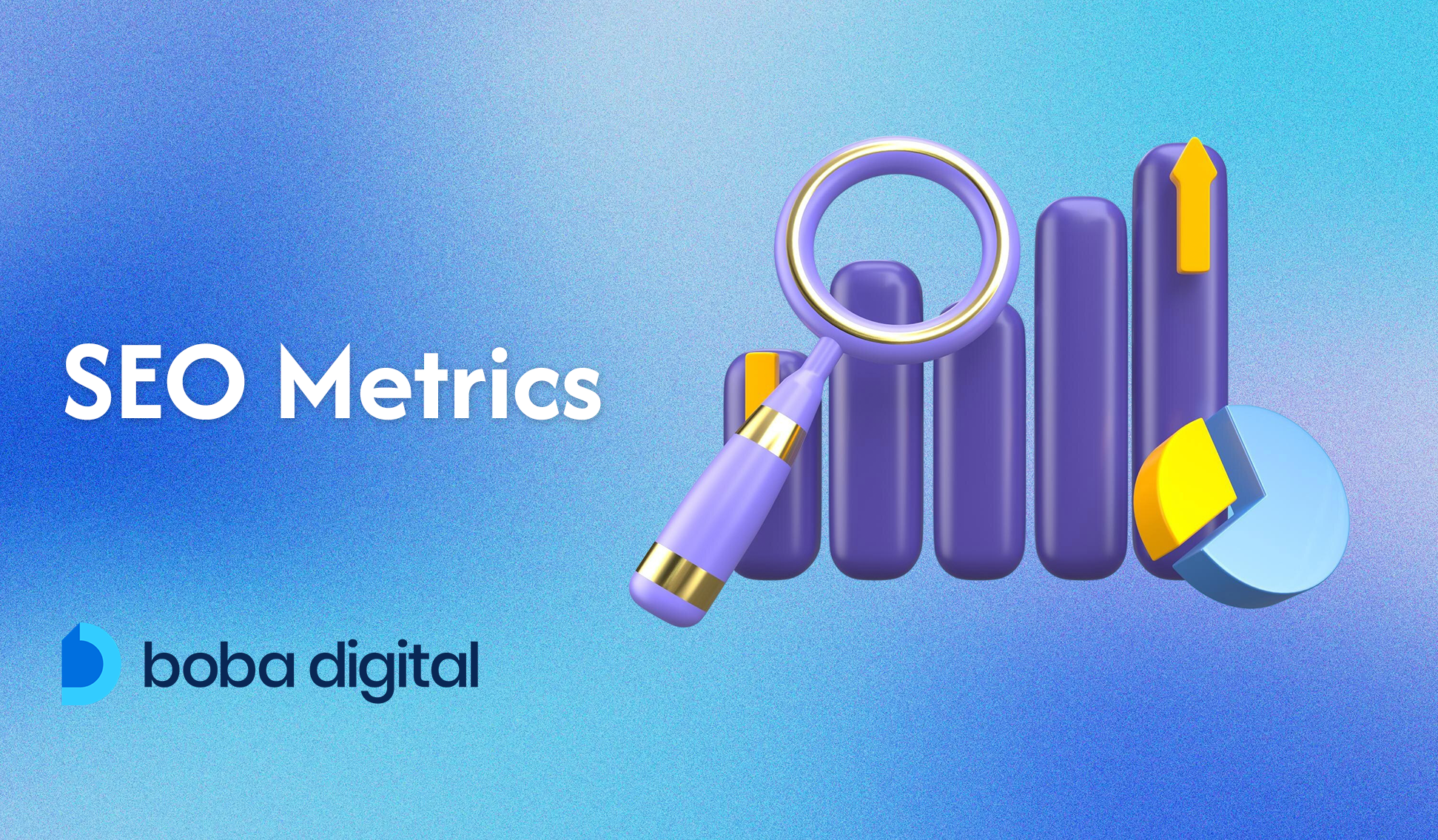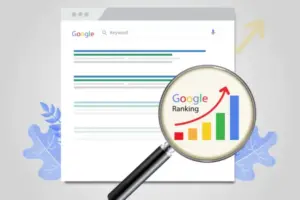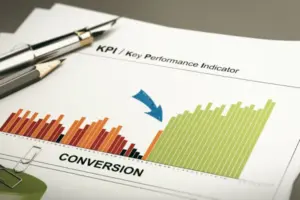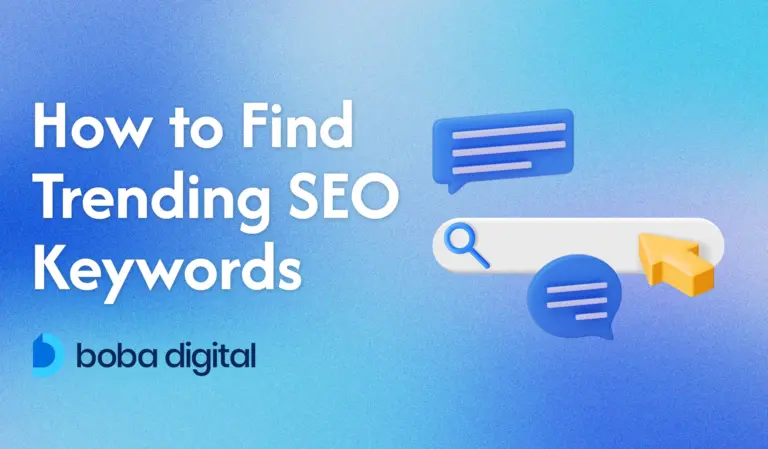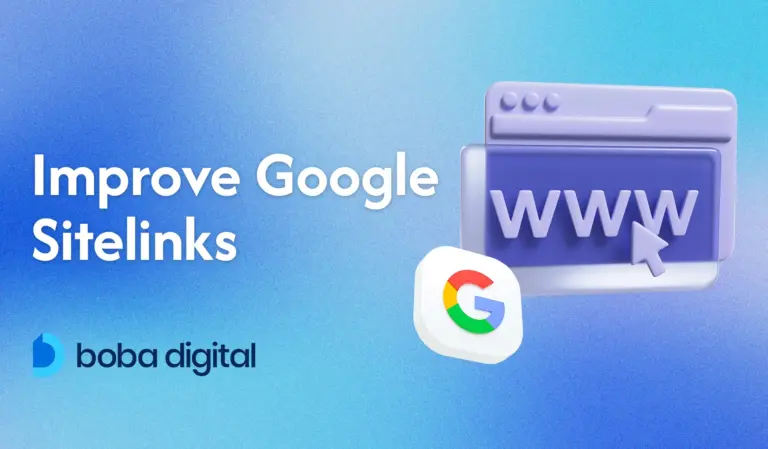10 Enterprise SEO Metrics for Effective Performance Tracking
Tracking the right SEO metrics is the backbone of enterprise success in the digital age. For large businesses, where competition is fierce, search engine optimization isn’t just about ranking higher—it’s about making data-driven decisions that drive measurable growth. Companies that invest in SEO see over 1,000% more traffic than those relying solely on social media, proving its undeniable impact.
Understanding which SEO metrics to track ensures that enterprise brands optimize their strategies effectively, improve search rankings, and enhance user engagement. With 61% of B2B marketers prioritizing SEO, it’s clear that performance tracking is essential for long-term success. But not all key metrics can hold the same value.
This guide explores 10 critical enterprise SEO metrics that help businesses maximize visibility, refine their approach, and achieve sustainable growth in search results. Whether it’s keyword rankings, organic traffic, or technical SEO factors, knowing what to measure can make all the difference.
1. Organic Search Traffic: Measuring Visibility at Scale
Organic search traffic is the foundation of SEO success. It represents visitors who find a website through unpaid search engine results, making it a key indicator of visibility and brand authority. With 53% of website traffic coming from organic search, it remains the largest traffic source for businesses, driving sustainable growth without ongoing ad spend.
For enterprises, tracking organic traffic isn’t as simple as monitoring overall numbers—it requires analyzing trends across multiple locations, subdomains, and markets. A sudden traffic surge in one region could indicate a strong local search presence, while a decline elsewhere might signal algorithmic changes or increased competition.
2. Keyword Rankings: Tracking Positioning for Competitive Advantage
Keyword rankings determine where a website appears on search engine results pages (SERPs) for specific queries. Since the top three search results capture 75% of all clicks, securing high rankings for strategic keywords is essential for driving traffic and conversions.
For enterprises operating in multiple locations and markets, keyword tracking is more complex. Businesses must monitor thousands of search terms, including branded and non-branded keywords, to measure their SEO performance accurately. Tools like Google Search Console, Adobe Analytics, and third-party SEO platforms help track fluctuations, identify emerging trends, and uncover optimization opportunities.
Ranking improvements not only increase organic search traffic but also enhance brand credibility and boost conversion rates. By consistently monitoring keyword positioning and refining content strategies, enterprises can maintain a competitive edge and ensure sustained growth in search engine rankings.
3. Click-Through Rate (CTR): Optimizing for More Clicks
Click-through rate (CTR) measures the percentage of users who click on a search result after seeing it on search engine results pages (SERPs). Even if a page ranks well, a low CTR means it’s not attracting enough visitors. For enterprises, optimizing CTR can unlock thousands of additional visitors per month—even without changing rankings.
One of the most effective ways to boost CTR is through metadata optimization. Title tags and meta descriptions should be compelling, keyword-rich, and relevant to entice users to click. Additionally, structured data (such as review stars, product details, or FAQs) enhances search snippets, making them more engaging.
Enterprises can A/B test different metadata variations to identify which formats drive the highest engagement. By refining titles, descriptions, and rich snippets, businesses can significantly improve CTR, organic search traffic, and overall SEO success—all without altering their rankings.
4. Bounce Rate: Evaluating User Engagement
Bounce rate measures the percentage of visitors who leave a webpage without interacting further. A high bounce rate often signals issues with content relevance, page speed, or user experience (UX)—all of which can negatively impact SEO performance. For enterprises, keeping users engaged is crucial, as even a 1-second delay in page load time can reduce conversions by 7%, leading to lost revenue.
When bounce rates are high, businesses should analyze why users are leaving. Is the content answering their queries? Is the page taking too long to load? A/B testing different content layouts, optimizing calls-to-action (CTAs), and improving mobile responsiveness can help keep users engaged.
Additionally, reducing page load time through image compression, caching, and better hosting can significantly lower bounce rates. By refining content quality and UX, enterprises can boost user engagement, increase conversions, and strengthen their SEO success.
5. Conversion Rate from Organic Traffic: Measuring Business Impact
Conversion rate measures the percentage of organic visitors who complete a desired action, such as making a purchase, signing up for a newsletter, or requesting a demo. While high keyword rankings and organic traffic are important, true SEO success comes from turning that traffic into valuable business outcomes.
Enterprises need to track conversion rates across different audience segments and landing pages to identify which pages drive the most profitable actions. Companies that prioritize SEO-driven conversion optimization achieve an average 14.6% conversion rate, compared to just 1.7% for outbound marketing, proving the effectiveness of organic strategies.
Optimizing landing pages, CTAs, and content relevance can significantly improve conversion rates. Clear messaging, fast load times, and well-placed CTAs encourage visitors to take action. Tracking user behavior through Google Analytics and enterprise SEO platforms helps businesses refine their approach and maximize the ROI of their organic search efforts.
6. Backlink Profile: Building Authority at Scale
A backlink profile refers to the collection of inbound links pointing to a website from external sources. These links serve as signals of credibility, directly influencing domain authority and search rankings. Research shows that pages with high-quality backlinks rank 77% higher than those without, reinforcing the importance of a strong link-building strategy.
For enterprises, the focus isn’t just on acquiring more links—it’s about securing relevant, authoritative backlinks from industry-leading websites. High-quality backlinks improve search visibility and trustworthiness, while low-quality or spammy links can trigger penalties from search engines.
To maintain a healthy link profile, enterprises conduct regular link audits using tools like Google Search Console and third-party SEO platforms. Identifying and disavowing toxic links ensures that a site’s authority remains strong and rankings stay competitive. A well-maintained backlink profile is essential for long-term SEO success and sustained visibility in search results.
7. Page Load Speed: Improving User Experience & Rankings
Page speed is a critical SEO metric that directly impacts search rankings, user engagement, and conversions. A 3-second delay in page load time can cause 40% of users to abandon a site, leading to increased bounce rates and lost revenue. For enterprises managing large websites, slow-loading pages can significantly hinder organic search performance.
Google considers Core Web Vitals—which measure loading speed, interactivity, and visual stability—as a ranking factor for both mobile searches and desktop searches. Pages that load faster not only rank higher but also provide a better user experience, reducing abandonment rates and improving conversion potential.
To enhance page speed, enterprises should focus on:
- Optimizing images using compression techniques.
- Reducing server response times with better hosting solutions.
- Enabling caching to speed up returning visits.
- Minimizing unnecessary scripts that slow down loading times.
By improving these Core Web Vitals, businesses can achieve better search visibility, lower bounce rates, and higher conversions, ensuring a seamless experience for users across all devices.
8. Indexed Pages: Ensuring Full Search Visibility
Indexed pages refer to the web pages recognized and stored by search engines, making them eligible to appear in search results. For enterprises, maintaining proper indexing is crucial—without it, even the most valuable content may remain invisible to potential customers. However, 20% of enterprise websites face indexing issues that negatively impact their search performance.
Tracking indexed pages through Google Search Console helps businesses ensure that their most important content is properly indexed while identifying duplicate or low-value pages that could dilute search visibility. Enterprises must regularly audit their indexed pages to prevent content cannibalization, where multiple similar pages compete for the same keywords, reducing overall rankings.
9. Mobile Usability: Optimizing for Mobile-First Indexing
With 63% of Google searches now happening on mobile, ensuring a seamless mobile experience is no longer optional—it’s essential for SEO success. Google’s mobile-first indexing means it primarily evaluates a website’s mobile version when determining rankings. If a site isn’t optimized for mobile, it risks losing visibility in search results and experiencing higher bounce rates.
For enterprises, optimizing mobile usability involves more than just resizing a desktop page. Best practices include:
- Responsive design that adapts seamlessly across different screen sizes.
- Fast-loading mobile pages to prevent user drop-offs.
- Click-friendly navigation with easy-to-tap buttons and intuitive menus.
A mobile-friendly site enhances user engagement, search rankings, and conversions. Enterprises must regularly test their mobile performance using Google Search Console and Core Web Vitals reports to ensure they meet Google’s standards for speed, accessibility, and usability.
10. ROI from SEO Investments: Tracking Business Growth
Return on investment (ROI) from SEO measures how much revenue is generated compared to the cost of SEO efforts. Unlike paid ads, which require ongoing spending to maintain traffic, SEO delivers long-term value—with an average ROI of 22:1, making it one of the most profitable digital marketing strategies.
Enterprises track SEO ROI by comparing organic traffic-driven revenue against the cost of SEO services, content creation, and link-building efforts. Tools like Google Analytics and Adobe Analytics help measure lead generation, sales conversions, and customer acquisition costs directly tied to SEO.
To maximize ROI, businesses focus on high-intent keywords, technical SEO improvements, and continuous content and optimization efforts. Unlike paid ads, which stop delivering results once the budget runs out, SEO compounds over time, making it a scalable and cost-effective strategy for long-term business growth.
Partner with Boba Digital for Enterprise SEO Growth
Your enterprise deserves an SEO strategy that delivers real results—higher rankings, increased organic traffic, and measurable ROI. At Boba Digital, we specialize in scaling SEO for large businesses, helping you outrank competitors, drive qualified traffic, and maximize conversions.
Our data-driven approach ensures that every aspect of your SEO efforts is optimized, from tracking your key performance indicators and metrics to refining strategies for long-term growth. Don’t leave your SEO success to chance. Let’s build a strategy that works!
📞 Contact Us Today! 🚀 Schedule a Consultation: Click Here!

